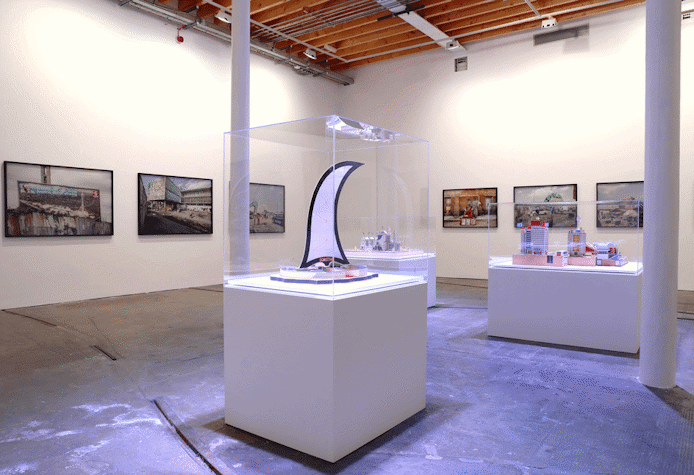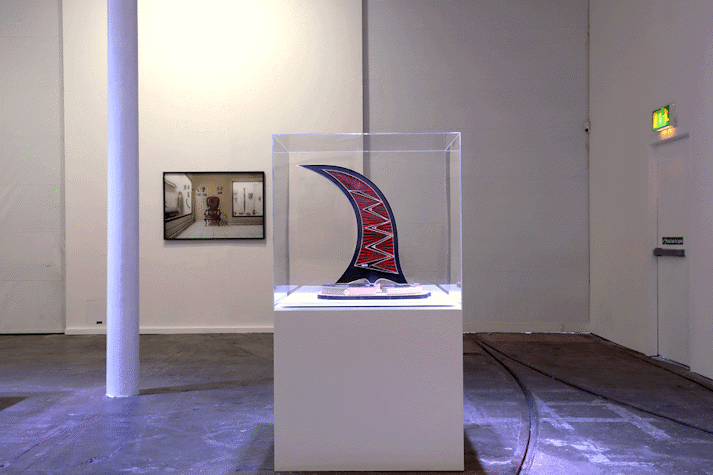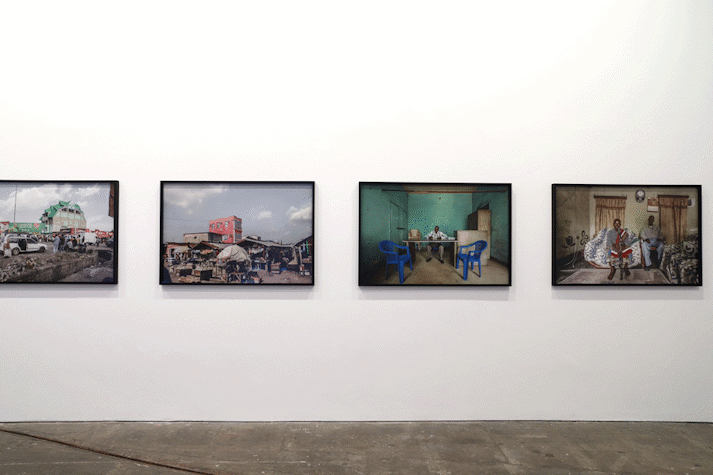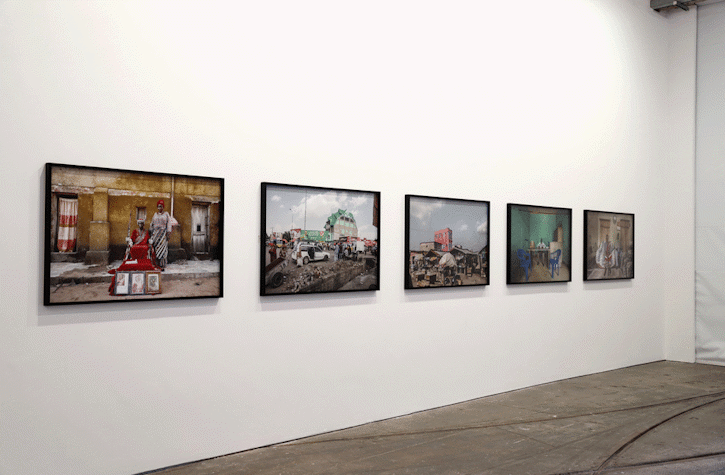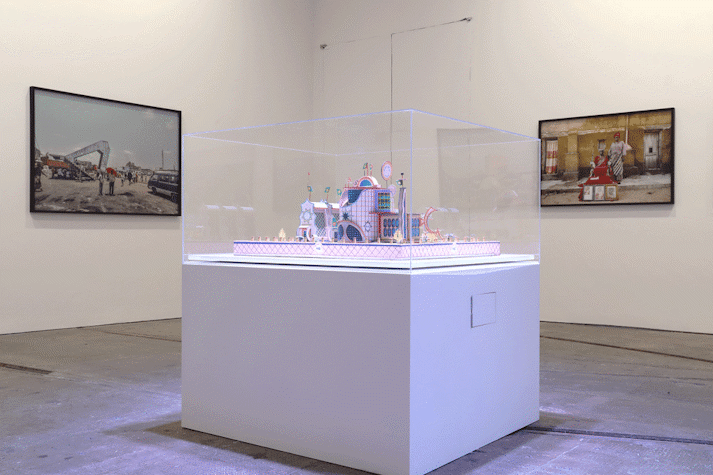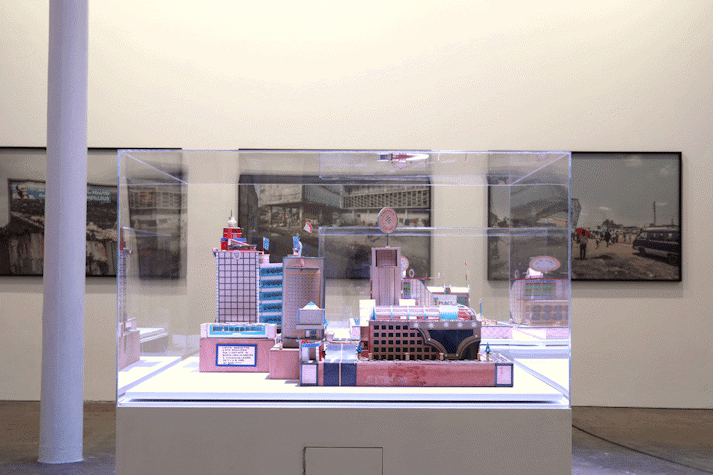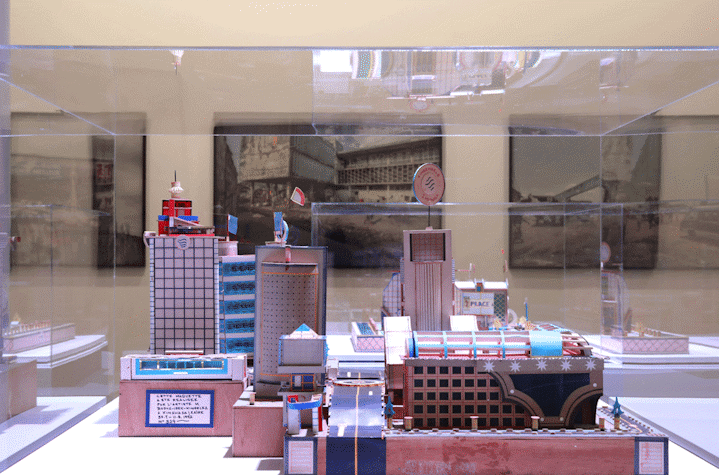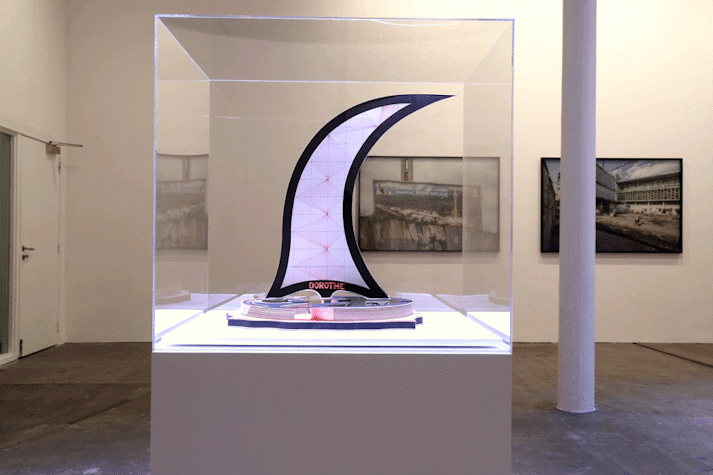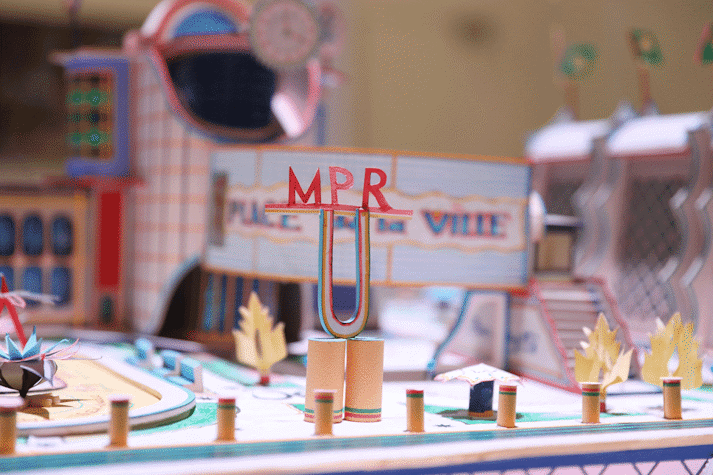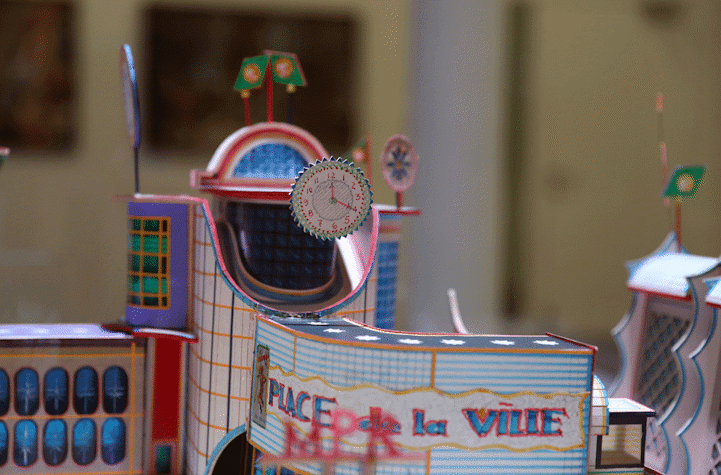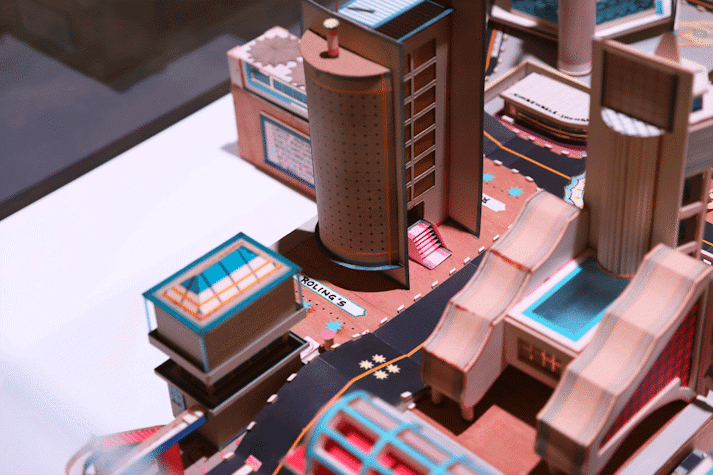Sammy Baloji, Bodys Isek Kingelez
Tramway
This exhibition brought together two artists from the Democratic Republic of Congo (DRC), Sammy Baloji and Bodys Isek Kingelez, whose work shares an exploration of warped colonial legacies alongside visions of future living. Whilst Kingelez made precise, delicate and detailed models offering imagined propositions for a vibrant cityscape, Baloji draws our eye to people living in the city today and moments of utopia that exist in the day-to-day urban fabric.
Bodys Isek Kingelez (1948 – 2015) was born in the DRC when it was known as Zaire. Working in a period of socio-political shifts, Kingelez responded to an urgent need to transform urban reality. The results are sculptures of imagined buildings that propose fantastical, utopian models for a more harmonious future society. Kingelez referred to his works as ‘extreme maquettes’. Each can be thought of as a self-sufficient sculpture and also as a model for a future work, a building or urban masterplan to be realised in the world at some future time. From the late 1970s until 1985 he worked as a self-taught art restorer at the Institut des Musées Nationaux du Zaïre in the capital Kinshasa, which gave him access to supplies and materials, and a base to refine his practice. He created works from a variety of everyday and found materials such as coloured paper, cardboard, plastic and tape, meticulously repurposed in order to radically rethink the world around him.
Sammy Baloji (b. 1978) was raised in the mining town of Lubumbashi, the second largest city in the DRC. Through photography, collage, film and installation, he explores the ongoing impacts of colonial infrastructure and systems of capitalist extraction. Baloji’s work is rooted in extensive archival research as well as lived experience. He uncovers layers of history in order to think about the ways in which the past continues to shape the present, through mechanisms such as transport infrastructure, land ownership, property rights and racialised divisions in urban planning.
On display were photographs from the series Urban Now, produced between 2013 and 2015 in collaboration with urban anthropologist Filip de Boeck. These photographs addressed the question of architecture in Kinshasa and the overlaps and disconnects between multiple visions of the city: from crumbling colonial infrastructure to airbrushed neoliberal futures manifested across billboards and advertisements. They asked us to think about interior spaces as affective landscapes and spheres for the imagination, which are simultaneously a part of the rest of the city and somehow apart from it.
Supported by Henry Moore Foundation

